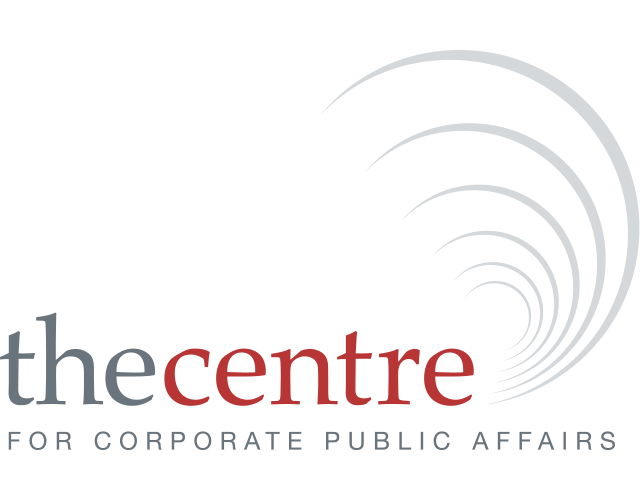
The Centre’s Top Five predictions for corporate public affairs in 2017
As we have done in previous years (it’s déjà vu all over again), we have collated our Top Five predictions for corporate public affairs for the coming 12 months.
For 2016 (see list at the end of this message), our predictions for the practice of corporate public affairs in large organisations included stakeholders being at the heart of public affairs strategy, proliferation of social media command centres, introduction of public affairs night shifts in some large organisations, and the renaissance of the corporate narrative.
At the risk of being tarred and feathered for getting it totally wrong (Brexit, Trump election), most of what we picked as the big developments in 2016 were realised in Australia and many parts of Asia, and also in Europe and North America.
So, based on our conversations with corporate public affairs leaders, CEOs, boards of governance, as well as our own insights, here are our Top Predictions for 2017.
1. The evidence-base Arms Race
Corporations in particular know that fake news and ‘truthiness’ is nothing new, having yore managed issues and reputations assailed by misinformation fuelled by widespread suspicion that no corporation can really be trusted to do the right thing.
2016’s Brexit and US Presidential election saw misinformation on methamphetamine, intense media focus on fake news, and the impact of the Dunning Kruger Effect on public discourse, have seen many companies think even harder about how they can counter, and be prepared to counter, fake news about themselves, and public attacks on them and their reputations based on false claims and misinformation.
The corporate public affairs management function has been traditionally allergic to requesting money to fund research (unlike their marketing or HR counterparts).
Over the next year, expect corporate public affairs teams to request, initiate and package more evidence-based research to frame issues and manage them, and to become far more engaged in what data they can mine from their own organisations to populate an evidence base to influence stakeholders.
In an issues framing and management arms race, a robust evidence base remains an asset, and poses far less risk than no evidence at all.
2. The beginning of the end of the corporate Intranet
It’s been swell, but the days of the corporate Intranet as we know it today are numbered.
2017 will see more organisations lay their Intranets to rest as a primary employee engagement and communications tool.
The passive mode of the Intranet has been under challenge during the past few years (in 2016 in particular) from social and connected media products, as well as bespoke device and software agnostic communication platforms commissioned by corporate public affairs teams.
In the cost stakes alone, the Intranet is becoming increasingly stranded.
The Intranet is not yet dead, but its obituary is being written in many organisations in which employee communications teams are determined to seek out the most effective – including cost effective – ways to create dialogue among employees and sustain employee engagement.
3. The production-savvy corporate public affairs practitioner
The late 1990s and early 2000s saw graphic designers and video production professionals hurled from the corporate public affairs payroll, and their expertise and services outsourced.
In 2017 it is back to the future as an increasing number of corporate public affairs teams again in-source graphics and audio-production capabilities – via their own practitioners.
2017 will see more training and recruitment focused on public affairs practitioners of all levels of seniority being able to generate (including editing) low production value video for stakeholder communications, and develop graphics (including simple and effective infographics).
This means adding “audio and visual production capabilities” to the job descriptions of most corporate public affairs team members.
4. Infographic mania
Your organisation may not, like GE, lodge its annual results statement to the NYSE via an infographic (2016).
However, if your corporate public affairs team is not focused on telling stories and presenting evidence and facts via infographics, 2017 may well be the year in which it begins to.
The gold standard in public advocacy and stakeholder communications includes heavy doses of infographics that appeal to a stakeholder’s System 1 Heuristic Thinking, especially when the output is to communicate clearly a difficult or complex concept, issue or argument.
Over the next few years, the use of effective infographics as an internal and external stakeholder communications tool is likely to be a given in most corporate public affairs management functions.
5. More women leading the management function
According to the Centre’s regular State of Australian Public Affairs, the number of women working in the corporate public affairs function have outnumbered men for the past 15 years. However, during that time (and for all the years before then), the vast majority of heads of function have been men.
2015 – 2016 was the first year our data indicated that as many women as men now lead the corporate public affairs function in Australia.
We predict that 2017 could be the year when slightly more women lead the function in Australia than men, and that in the future, the gender balance at the very top of the corporate public affairs function will be sustained.
The year that was: the Centre’s Top Predictions for 2016
1. Stakeholders at the heart of corporate public affairs strategy.
2. Social Media Command Centres.
3. Public affairs night shifts will be introduced in some organisations to monitor issues, and provide rapid socio-political response.
4. Renaissance of the corporate narrative.
5. Public Affairs helping their organisation understand the Asian Century.
The year that was: the Centre’s Top Predictions for 2015
1. Convergence of internal and external communications.
2. More cooperation between public affairs and marketing departments.
3. Application of heuristics to corporate stakeholder communications.
4. Stakeholder research becoming an essential input to public affairs strategy and planning.
5. Advent of a 'common market' for corporate public affairs skills across Australia and Asia.
